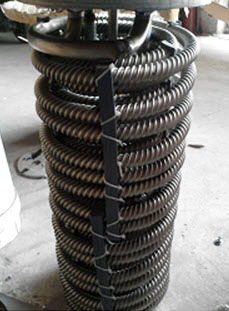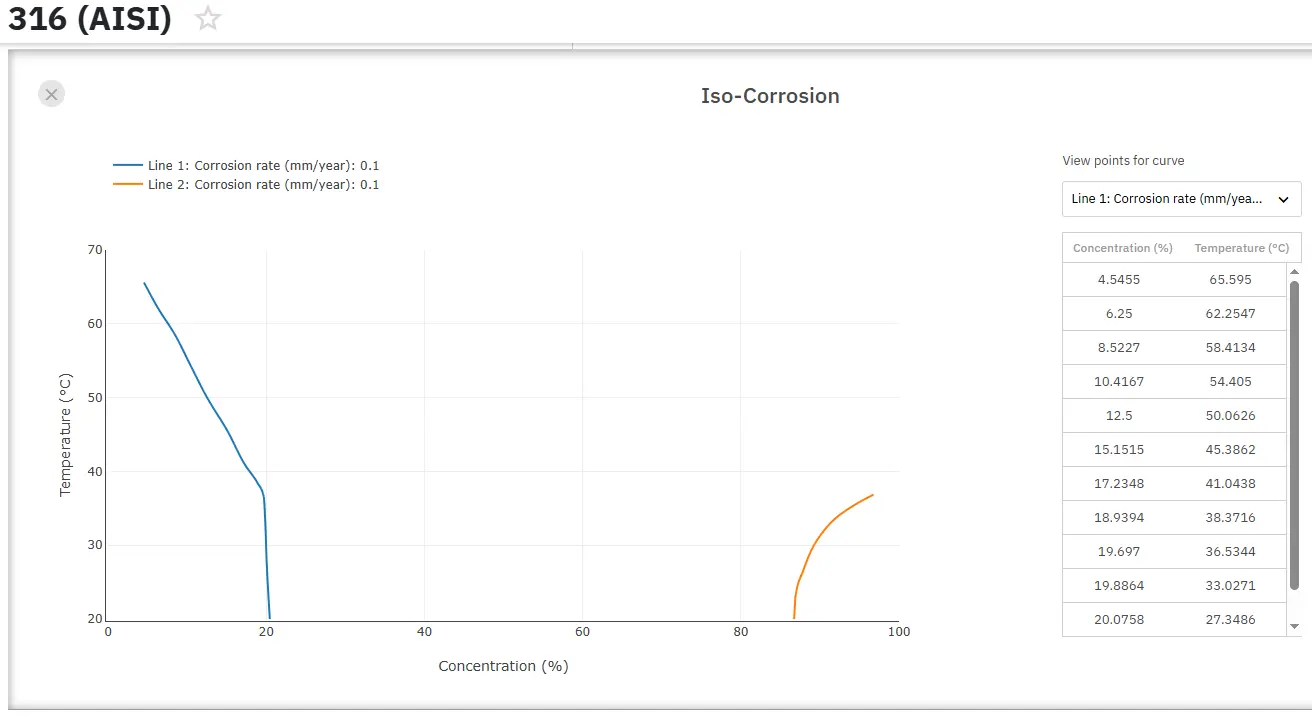Corrosion of Titanium Alloys: Part One
Abstract
Titanium is well known for its extremely tough characteristics in severe environments with specific applications in the chemical process industry, energy, desalination, military and many more.
The most important properties of titanium in relation to corrosion resistance are its immunity to both pitting and stress corrosion.
Titanium is well established for use in some of the most severe environments in many industries including the chemical process industry (CPI), energy (including geothermal), pulp & paper, desalination (in multi-stage flash desalination units), refineries, and in the utility industry in utility steam condensers. It is also playing a significant part in off-shore rigs in ballast tanks, fire-main systems and general service water piping systems, linings for flue gas desulfurization (FGD), among many others.
In the past decade there has been a significant increase in the usage of titanium for military applications including armor, protective linings, and especially in naval applications where seawater is the environment and where corrosion, erosion and maintenance are of primary concern.
Within the context of seawater environments, applications for titanium include heat exchanger seawater cooling (both shell & tube and plate/frame), in service water lube oil coolers and other general heat exchanger systems. It is also used in both shipboard and in land-based plants, in hot water heater units as well as for refrigeration, as air chillers and air-conditioning systems. Its products run the gamut from sheet for heat exchanger shells and baffles, plate for tube sheets and vessels, tubes for seawater cooling, pipe, fittings (elbows, tees, reducers, etc.), fasteners, flanges, pumps and valves for seawater service water input, fire protection systems and drainage.
The important properties of titanium is its immunity to both pitting corrosion and stress corrosion cracking in chloride solution, an environment which causes corrosion of stainless steels. Consequently titanium is used extensively for vessels in the chemical industries, and for heat transfer tubes in steam turbine condensers and multi-stage flashing type desalination plants. However titanium can suffer from crevice corrosion in hot chloride solution, and as titanium is commonly used in such conditions this form of corrosion can constitute a practical problem.
For these reasons the effects of environmental factors such as chloride ion concentration, temperature, and the pH of the solution on crevice corrosion have already been investigated. Moreover, several methods of preventing crevice corrosion on titanium have been proposed, and some resistant materials have been developed. The most popular of these is titanium-0.15% palladium (Ti-0.15Pd). Currently titanium - 0.3% molybdenum - 0.8% (Ti-0.3Mo-0.8Ni) is being investigated, because of its lower cost, while a mixture of palladium and titanium oxides (PdO/TiO2, -Ti) is being applied to industrial equipment by a simple surface treatment.
The corrosion resistance of titanium is the result of a stable, protective, strongly, adherent oxide film. This film forms instantly when a fresh surface is exposed to air or moisture. Also, the oxide film of titanium is very stable, though relatively thin, and is attacked by only a few substances, most notable of which is hydrofluoric acid. Because of its strong affinity for oxygen, titanium is capable of healing ruptures in this film almost instantly in any environment where a trace of moisture or oxygen is present. Anhydrous conditions, in the absence of a source of oxygen, should be avoided because the protective film may not be regenerated if damaged.
A 12-16 angstroms thick oxide film is immediately formed on clean titanium when it is exposed to air. It continues to grow slowly, reaching 50 angstroms after 70 days and 80-90 angstroms after 545 days. The film growth is accelerated under strong oxidizing conditions. This oxide film is very stable and is only attacked by a few substances - most notably hydrofluoric acid. The titanium oxide film is capable of healing itself instantly in the presence of moisture or oxygen.
The protective oxide film of most metals is subject to being swept away above a critical water velocity. After this takes place, accelerated corrosion attack occurs. This is known as erosion-corrosion. For some metals, this can occur at velocities as low as 2-3 ft/s. The critical velocity for titanium in seawater is in excess of 90 ft/s. Numerous corrosion-erosion tests have been conducted and all have shown that titanium has outstanding resistance to this form of corrosion.
Anhydrous conditions should be avoided since the protective film may not be regenerated in the absence of oxygen.
General Corrosion Testing
General corrosion rates for titanium alloys can be determined from weight loss data, dimensional changes, and electrochemical methods. Electrochemical polarization testing is often used to supplement weight loss testing. Polarization testing can identify whether the alloy is truly fully passive or possibly metastable; this is often not discernible from weight lost tests alone.
Equivalent Weight
Corrosion rates (mm/yr) can be calculated from electrochemical measurements (ASTM G5) by:
Corrosion rate= (0.0033)(icorr) (EW)/d
Where icorr is the measured corrosion current (in milliamps per square centimeter), d is alloy density (in grams per cubic centimeter), and EW is the equivalent weight for titanium. The equivalent weight for titanium is approximately 16 under reducing acid conditions and 12 under oxidizing conditions. The value of icorr is typically determined from Tafel slope extrapolation or linear polarization methods.
Resistance to waters
Fresh Water – Steam
Titanium resists all forms of corrosive attack by fresh water and steam to temperatures as high as 600 degrees F (316°C). The corrosion rate is very low and a slight weight gain is generally experienced. Titanium surfaces are likely to acquire a tarnished appearance in hot water or steam but will be free of corrosion.
Some natural river waters contain manganese which deposits as manganese dioxide on heat exchanger surfaces. This is harmful and promotes pitting in both austenitic stainless steels and copper alloys. Chlorination treatments used to control sliming result in severe pitting and crevice corrosion on stainless steel surfaces. Titanium is immune to these forms of corrosion and is an ideal material for handling all natural waters.
Seawater - General Corrosion
Titanium resists corrosion by seawater to temperatures as high as 500 °F (260 °C). Titanium tubing which has been exposed to seawater for many years at depths of over a mile shows no measurable corrosion. It has provided over twenty five years of trouble-free seawater service for the chemical, oil refining and desalination industries. Pitting and crevice corrosion are totally absent, even when marine deposits form. The presence of sulfides in seawater does not affect the resistance of titanium to corrosion. Exposure of titanium to marine atmospheres or splash or tidal zones does not cause corrosion.

Figure 1: Marine Titanium Heat exchanger coil titanium coil
Read more
Access Precise Corrosion Properties Now!
Total Materia Horizon contains corrosion behaviour and property information for hundreds of thousands of materials, accross more than 2,000 media.

Get a FREE test account at Total Materia Horizon and join a community of over 500,000 users from more than 120 countries.